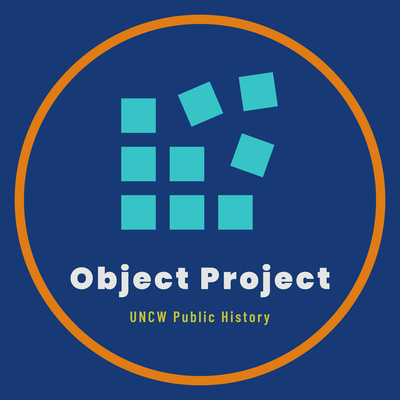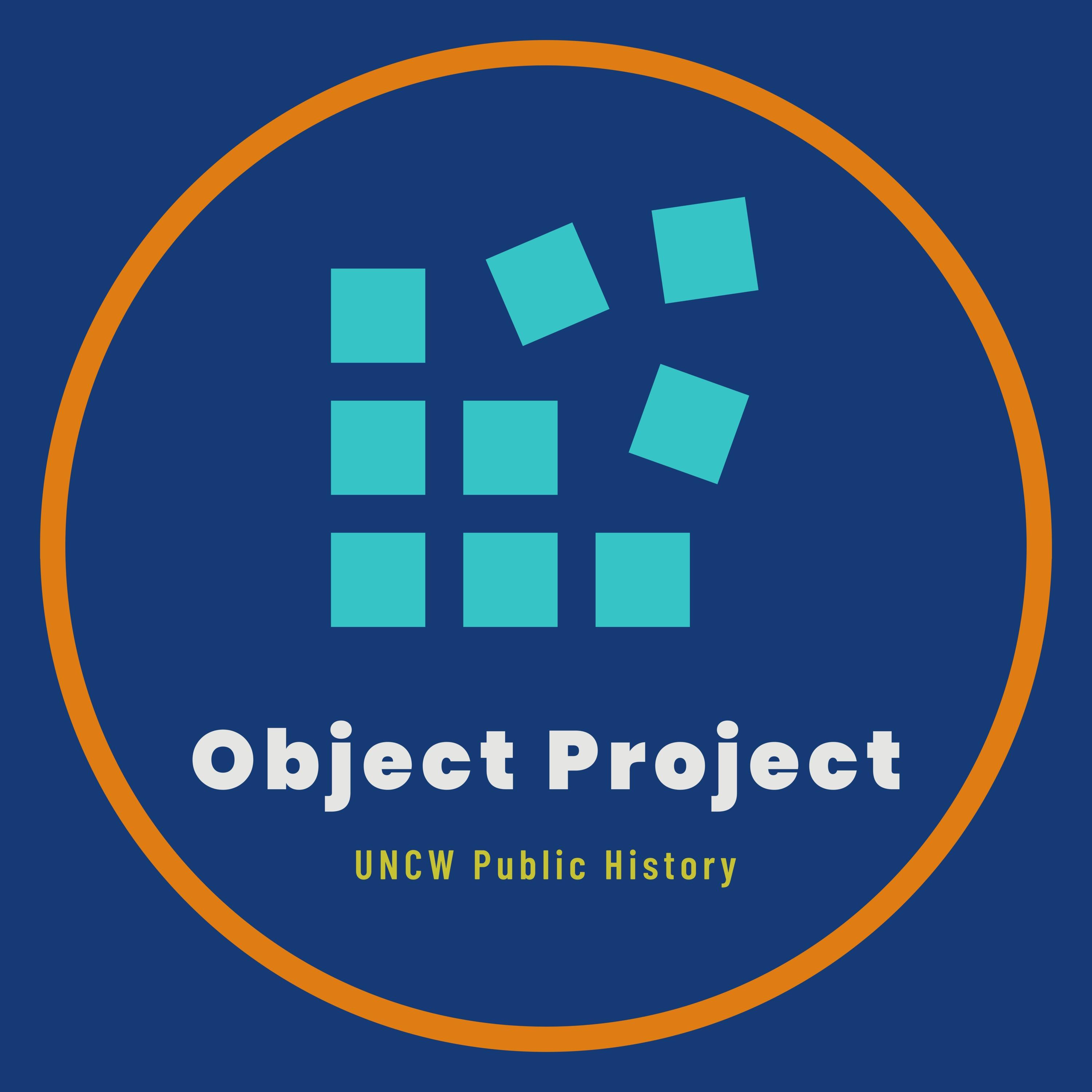
Object Project
By UNCW Public History
The Object Project is a podcast about material culture and history, produced by history students of the University of North Carolina Wilmington, in Wilmington, NC, and Dr. Jennifer Le Zotte, assistant professor of US history and material culture.

Object ProjectSep 09, 2020

American Childhood: Baby Nancy
Karla Berrios explores the turbulent race context surrounding Baby Nancy, "the first Black baby doll made by African Americans for African Americans." Berrios takes us through the racist history of previous Black dolls, negatively stereotyped by their white creators. Baby Nancy's debut in 1969 follows on the heels of race riots, emerging from the site of one of the most well known clashes, Watts. Listen to hear more about the positive effects of this groundbreaking plaything.

American Childhood: Mechanical Banks
Audrey Ross details what a cast iron children's toy from the late nineteenth century tells us about racial and economic instruction for white children. Through gross stereotypes of Black children and simple mechanical devices, such popular items taught racial prejudices alongside values of thrift and industry.

American Childhood: Boy Scouts of America Uniform
In this episode, Chase Warchol examines a 1940s Boy Scout Uniform. Come along with us to hear how the material details of this paramilitary garb represents the fears and hopes of a generation. Embedded in the hunter green socks and khaki pants are the ways in which the designers' ideals of nature and masculinity fit into mainstream aspirations for American boys.

American Childhood: Crayola Crayons
Brian Fiore walks up through a sensory journey of a nearly universal childhood staple: Crayola Crayons. Through examining a 1903 box of crayons on display at the Smithsonian Museum of American history, Fiore looks at the production, distribution, color names, and more of these iconic items.

American Childhood: A Toddler's Pudding Cap
Edward Tatum, UNCW MA student and Colonial Williamsburg enthusiast, tells us all about the historical importance of the "Pudding cap." Pudding caps were toddler crash helmets whose material details offer information about its owner's class and status and about societal ideas about childhood at the dawn of the American Revolution.

1898 Wilmington: 1898 Memorial
Graduate student Aryn explores the making and meaning of the 1898 Memorial installed in Wilmington, North Carolina more than a century after the violent events of Nov 10, 1898. Along the way, Aryn looks at the false historical memories that forestalled public acknowledgment of the role of white supremacy in the coup and massacre and examines the political process of memorialization.

1898 Wilmington: The Red Shirts
In the seventh episode of this season's Object Project, undergraduate Brian explores the violent white supremacists, The Red Shirts. Through examining the material and meaning of the symbolic garment, Brian shows how intimidation was central to many steps of the conspiracy to overthrow democratically elected officials, costing many Black lives along the way.

1898 Wilmington: Wilmington Light Infantry Pin
Undergraduate History student Buket describes how a small personal pin worn on a man's lapel over a hundred years ago leads us to a century-long legacy of violence and political control. The Wilmington Light Infantry played a central role in the coup and massacre of 1898. The men who wore such a badge have last names that still resonate powerfully in Wilmington today.

1898 Wilmington: Colt Browning M1895 (The Potato Digger)
Graduate student Maddie outlines the intimidating role of an expensive, high-powered weapon in the massacre and coup of 1898. The almost -100-pound rapid-fire gun may not have taken many lives on November 11, but it was given place of privilege in the white supremacist plans to take over Wilmington.

1898 Wilmington: A Secondhand Jonah Hoe Printing Press
UNCW history undergrad Nicole discusses the secondhand printing press used by Black newspaper editor Alex Manly to combat the white supremacist media rhetoric vilifying Black men as rapists and dishonesties politicians. Manly's press was specifically targeted in the November 1898 violence, as the perpetrators burned the building housing the machine nearly to the ground.

1898 Wilmington: Alexander Manly Daguerreotype
UNCW graduate student Tess examines the meanings and processes behind a daguerreotype cartes de visite of Alexander Manly, the editor of the Daily Record, Wilmington's only Black newspaper at the time of the 1898 massacre. Manly's anti-racist editorials provoked white supremacist anger, and some went so far as to blame Manly for the violence. Manly and his family escaped just before the violence ensued, never to return to Wilmington, and his printing press was burned to the ground.

1898 Wilmington: Alfred Waddell's Gavel
In this episode of Object Project, UNCW student Lena offers an inside look at the meaning and value of Alfred Waddell's gavel, held in the North Carolina History Museum. Including a scathing but sometimes humorous biography of one of the chief perpetrators of the violence in 1898 Wilmington, this episode delves deep into what a single object can symbolize about power and control across generations.

1898 Wilmington: Valentine Howe's Fire Horn
In the first episode of Object Project's season discussing the material culture of the 1898 Wilmington Massacre, UNCW grad student Aeris introduces Valentine Howe's Fire Horn. This artifact, housed at the Cape Fear Museum of History and Science in Wilmington, frames a story about how the status and value of fire departments (both Black and white) played a intricate part in white supremacist campaign to upend the power and resilience of Wilmington's Black community.

2.3: Guy Nixon's Door
Join us, through a nineteenth-century door in Wilmington, North Carolina's Bellamy Mansion. Upon this door, an enslaved man wrote his name several times, leading Andrew Craig and Rebecca Mullins on an exploration of enslaved lives, literacy, and the ideals of freedom.

Ep 2.1 1868 Horatio Seymour Snuffbox
In 1868, supporters of U.S. presidential candidates Horatio Seymour could purchase a small snuffbox with Seymour's likeness on it. Join us to discover what exactly a snuffbox is and why they were used in Victorian political campaigns.

Ep 2.2 The Morse Daguerreotype
Did you know the inventor of the Morse code brought one of the first modern cameras to America? Tune in to learn about Samuel Morse's 1839 Daguerreotype and its cultural implications.

Ep 1.5 1950s Apron Pattern
The fifth minisode in our series looks at the social, cultural, and economic importance gleaned from a 1950s Apron Pattern. While little is know about the owner of the actual pattern, from an examination of the material itself and research into the role of the apron in culture and contemporary economies, Alex, Ian, and Elisa show how much we can learn about history through some brittle scraps of decades-old pattern paper.

Ep 1.4 1820s Tea Set
Object Project Minisode number 4 looks at an 1820s canary-yellow tea set. Listen to learn about the material and cultural difference between ceramic and earthenware tea sets, and how saucers were really used.

Ep 1.3 Voigtlander Camera
Object Project's third minisode looks at the story behind a 1875 Voigtlander Camera, housed at the Cape Fear Museum. Join Jackie, Anthony, Nicole, and David to hear the picturesque tale.

Ep 1.2 Mushroom Kingdom
Our second minisodes continues with the material culture of Wilmington's film history. Specifically, Alex B. and Alexander W use a sinister costume mask from 1993's Super Mario Brother's Movie to explore the history of Nintendo games and the film itself.

Ep 1.1 Blue Velvet
Object Project Episode 1.1 discusses the history and meaning of the iconic blue velvet gown used in the 1986 David Lynch film by the same title. The gown itself (one of two used in the film) is held in the collections of Cape Fear Museum in Wilmington, North Carolina.

Object Project Trailer
The stuff of history is all around us—it’s in what we eat and wear, where we live and play, and how we work and travel. The Object Project is a podcast about material culture and history, produced by history students of the University of North Carolina Wilmington, in Wilmington, NC, and Dr. Jennifer Le Zotte, assistant professor of US history and material culture. All episodes and mini-sodes are researched and recorded by UNCW students exploring the tangible past.